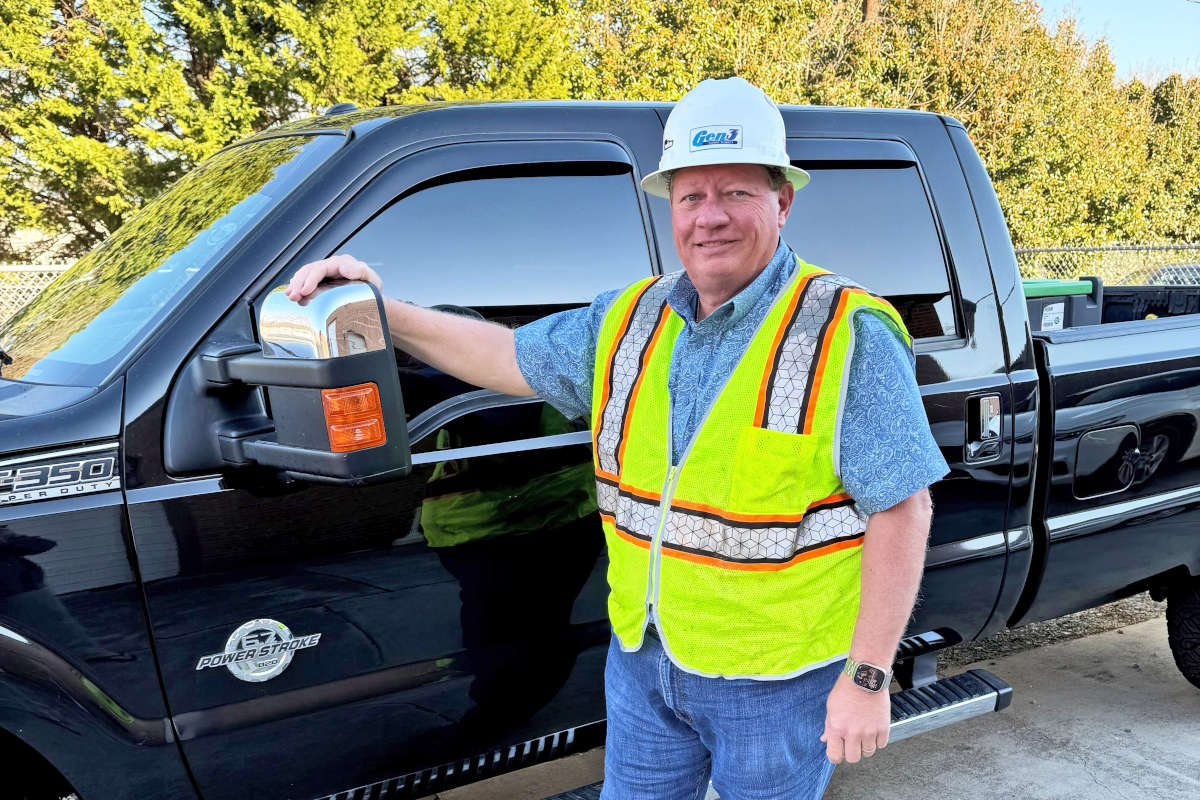
New Technology Employed in Fraser, Colorado
This trenchless story required convincing an owner, engineer and the Union Pacific Railroad to allow the use of a previously unknown trenchless installation method without grade control on a grade-critical project.
The reader should also be aware that this owner had a bad experience with trenchless installations in recent memory, so this situation had to be handled as professionally as possible from the beginning. We also had to successfully deliver the project on-line and on-grade. Fortunately, this is a success story that put relatively new technology into action in the Rocky Mountains.
The Town of Fraser (Town), Colorado — situated at an elevation of 8,579 ft above sea level — identified a need to replace the existing sanitary sewer pipe within the Town limits due to capacity concerns resulting primarily from increased development and inflow and infiltration. To kick off the project, Merrick & Co. was brought on as the design engineer. Through the design process, it became evident that the proposed alignment for the new 12-in. PVC sewer line would require several challenging crossings including one under Union Pacific Railroad (UPRR), which needed a trenchless installation method. Merrick and the Town decided to engage with a trenchless contractor to assist in the design and UPRR coordination of this 110-ft crossing of 24-in. steel casing.
Soils-Cobbles!
Fraser is located within the Rocky Mountain Range, it is no surprise that the 110-ft crossing beneath the 6-ft to 8-ft high railroad embankment required navigation through a large quantity of cobbles and boulders.
Ground cover for the trenchless crossing varied from approximately 4.5 to 5.5 ft at the embankment toes to approximately 13.5 ft under the railroad. The tunnel crossing was anticipated to be in a silty sandy gravel with frequent cobbles up to 10 in. in diameter and some boulders 1 to 3 ft in diameter.

Method Considerations and Contract Delivery
There were three different trenchless methods considered for this crossing. Pipe ramming with larger casing, guided auger boring (GBM), and use of the Geonex Down the Hole Horizontal Hammer Boring (DTH) Method. The Pipe ramming method would require an increase in casing diameter to 48 in. to allow for eventual removal of the larger cobbles and boulders, a large increase in cost to the project. A GBM is often the go-to choice for a short, grade-critical installation like this one. However, the chances of success for GBM installation were considered low, if not impossible due to the high quantity of large cobbles in the trenchless crossing alignment.
The Town and Merrick were less familiar with the Geonex system and the DTH method. Quite frankly, BTrenchless was also less familiar with the installation method, but we were curious and set up a meeting with Rich Revolinsky of Geonex to discuss the application of their system in these soil conditions while installing a 24-in. casing. Following this meeting, we had convinced ourselves the 24-in. casing installation was the way to go.
A series of meetings between BTrenchless, Merrick, and the Town were held to share our ideas on the best, most cost-effective installation method for the project. This included presentation of similar case studies and reasons we believed the DTH method was the best solution for the project. It was an easy sales pitch as the ground conditions were well suited for this machine, it could handle the large cobble and gravel, we had a lot of grade to work with if installed downhill, plus the installation method would be much quicker than traditional pipe ramming. These considerations combined with the material cost savings by using 24-in. casing vs. 48-in. made for a winning formula on paper.
BTrenchless provided our pricing for the trenchless crossing prior to the remainder of the project going out to bid. Since the cost savings were significant, as compared to the 48-in. pipe ramming approach, and all parties involved believed this method would be successful, the Town and Merrick made it a requirement that the low-bid contractor awarded the project had to use BTrenchless for the UPRR crossing, and we were written into the schedule of values.

Geonex DTH and How it Works
Unlike pipe ramming in which a percussion hammer is placed behind a casing to advance it forward, the DTH method places the hammer within the leading section of the casing pipe. When actuated by compressed air, the piston of the hammer accelerates a pilot bit and engaged ring bit forward into the subgrade, displacing softer material and fragmenting larger solid items like cobbles, boulders, and solid rock into small pieces. As the hammer cycles, air is expelled which blows the fragmented material back into the casing through small openings where it is then carried by the rotation of the auger string back to the launch shaft.
Advancement of the casing is achieved through the same process. As material is pulverized and transferred into the casing, the pilot bit and ring bit assembly are able to travel further forward along the bore path during the next stroke of the hammer. In doing so, the profile of the pilot bit engages an internal band on the start casing. As this happens, the momentum of the pilot bit pulls the casing along the bore path.
This system has limitations however, and the inability to control grade is a big one. Geonex was involved early-on in the design process, knew that a downhill installation approach would be required, and the likelihood that the DTH head tends to drop in elevation could be accounted for in the design.

UPRR Approval and the Result
Permission to use the DTH method by the UPRR would take six months and four plan revisions, including a robust recommendation package outlining the benefits of the Geonex system over any of the other typical trenchless installation methods.
The 24-in. casing was installed in one long 12-plus hour shift and the carrier pipe and pipe skids were installed the next day. Final design was 1.55 percent, and the as-built grade was slightly higher at 1.36 percent, within allowable tolerances. Overall, the final product resulted in a successful bore during the first attempt.
John Beckos, P.E., is a senior project manager and estimator at BTrenchless.




